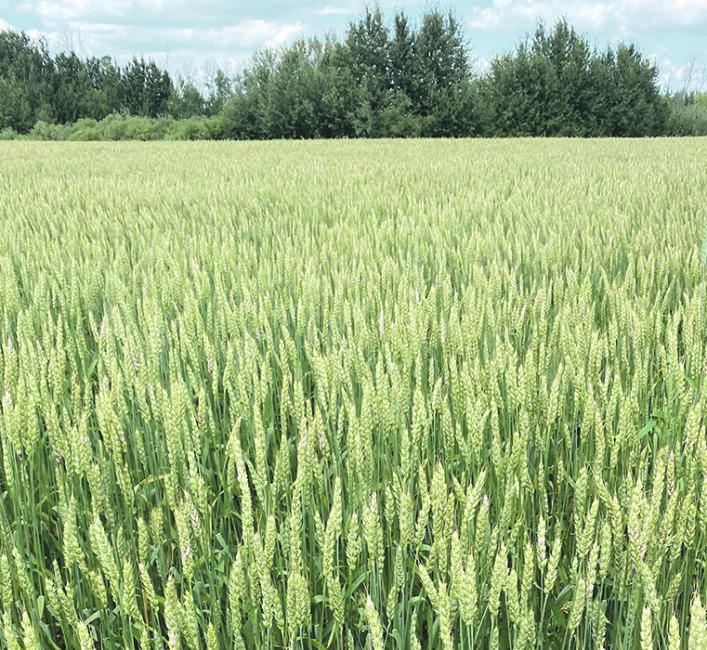Outlook for milling wheat appears strong

Canadian producers planted less of the crop than anticipated, and feed and ethanol demand is likely to remain strong
Canadian prairie spring wheat has been the belle of the ball in milling wheat markets in 2020-21 and the outlook for the upcoming year remains promising, says an analyst.
Farmers growing low-protein wheats have benefitted greatly from sky-high corn and barley prices, said Brennan Turner, chief executive officer of Combyne Ag.
The spot price for CPS 11.5 percent protein wheat was $7.42 per bushel as of May 21.
“This is impressive to say the least,” he told delegates attending a recent market outlook webinar hosted by the Alberta wheat and barley commissions.
“You’ve been paid pretty handsomely.”
That is after prices tumbled from a marketing year high of about $8.75 per bu. in early May.
Prices have been bolstered by the red hot feedgrain market but also by strong demand for low protein wheat out of Latin America.
Non-durum wheat exports to Latin American markets like Peru, Mexico, Colombia and Ecuador were 4.6 million tonnes through the first eight months of 2020-21.
That is a 50 percent increase over the same period last year. He credits groups like Cereals Canada and Alberta Wheat for the market development work they have done in those markets.
“This is literally proof in the pudding of those efforts,” said Turner.
The new crop price for CPS wheat was $6.85 per bu. for September movement as of May 21.
He expects the spread between new crop and old crop prices to narrow in the coming months with a $7 new crop target price being achievable.
The reason he is bullish CPS wheat is that Canadian farmers planted less of the crop than anticipated, feed demand is likely to remain strong for another year or two and ethanol demand is also good.
CPS wheat basis has been trending sideways but it tends to improve around harvest.
Farmers may want to lock in basis levels at that time for deferred delivery in January or February.
Turner is also bullish on Canada western red spring (CWRS) wheat because Canadian farmers planted 13.76 million acres of it, which is 10 percent lower than last year and seven percent below the five-year average.
Spring wheat acres are also down four percent in the U.S., falling to 10.9 million acres.
“This should be supportive of hard red spring wheat prices,” he said.
However, Canadian growers will be facing stiffer competition from the European Union and Black Sea regions.
The EU is expected to produce 134 million tonnes of non-durum wheat, an eight million tonne increase over last year.
Russia’s production is expected to remain steady at about 85 million tonnes, while Ukraine’s production is forecast to rise to 29 million tonnes, a 3.6 million tonne increase.
The EU, Ukraine and Argentina will have larger export programs in 2021-22 but Canada, Australia and the U.S. will all be down.
Turner expects HRSW prices to be flat to higher for the first half of 2021-22 and then dip back down in the second half.
Durum prices have been relatively stagnant in 2020-21 with little volatility.
“It’s kind of like the old hag for the wheat market,” he said.
Prices are still very attractive, with an old crop spot price of $8.30 per bu. and new crop value of $7.55 for September movement as of May 21.
He expects prices to stay where they are in that $7.50 to $9 range throughout the year.
However, the caveat is that durum is such a quality sensitive market that a harvest rain could easily drive prices back into the double digits.
Prices could get that Mother Nature bump a week or two before harvest as markets get nervous.
That might be a good time to lock in values because markets will quickly settle down once they are comfortable that crop quality will be good.
Italy has been Canada’s top durum market in 2020-21, buying 1.14 million tonnes through the first eight months, an 80 percent increase over the same time last year.
But the EU is expected to have a rebound in production and is unlikely to be as big of a buyer.
North African countries purchased 1.89 million tonnes of Canadian durum through the first eight months of 2020-21, a 123 percent increase over the previous year.
But again, that region is in much better shape this year.
The wildcard is Turkey, where purchases have plummeted 79 percent to 197,500 tonnes.
“Are they going to rebound in the coming year? If so, that would be a boon to prices,” said Turner.
He is forecasting one million tonnes of carryout in 2021-22, up from an estimated 750,000 tonnes this year but well below the five-year average of 1.33 million tonnes.
Source: producer.com

